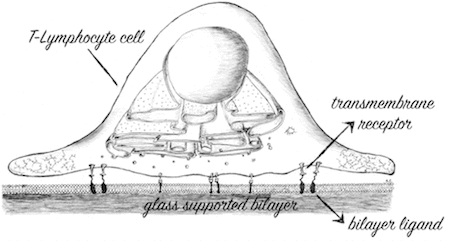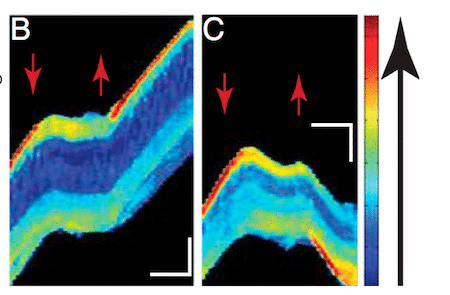Membrane adhesion


Immunological synapse
Soft interface dynamics is essential to a wide range of engineering applications and biological systems such as; microfluidics, wafer bonding, heart development and intercellular adhesion. Since these interfaces operate in liquid environments, their dynamics is intertwined with the fluid flow.
One particularly interesting biological phenomenon is immune cell adhesion, an essential part for immune system activation in response to harmful agents such as bacteria, viruses, and parasites. The immune system is challenged every day by these malignant invaders, which need to be recognized and pacified by the immune cells. This is enabled through cell adhesion by membrane bound proteins, which form a dynamic pattern that conceals the immune cell recognition strategy and the rules for immune system activation.
Cell migration in complex environments
How cells sense, respond to, and remember varying environmental stimuli is only just beginning to be understood. We identify a directional memory in chemotactic neutrophil-like cells, which allows cells to orient in environments with low signal gradients. We model this memory by distinct time scales of chemical sensing and cytoskeletal dynamics, pointing to a general strategy for robust behavioral dynamics in cellular systems.